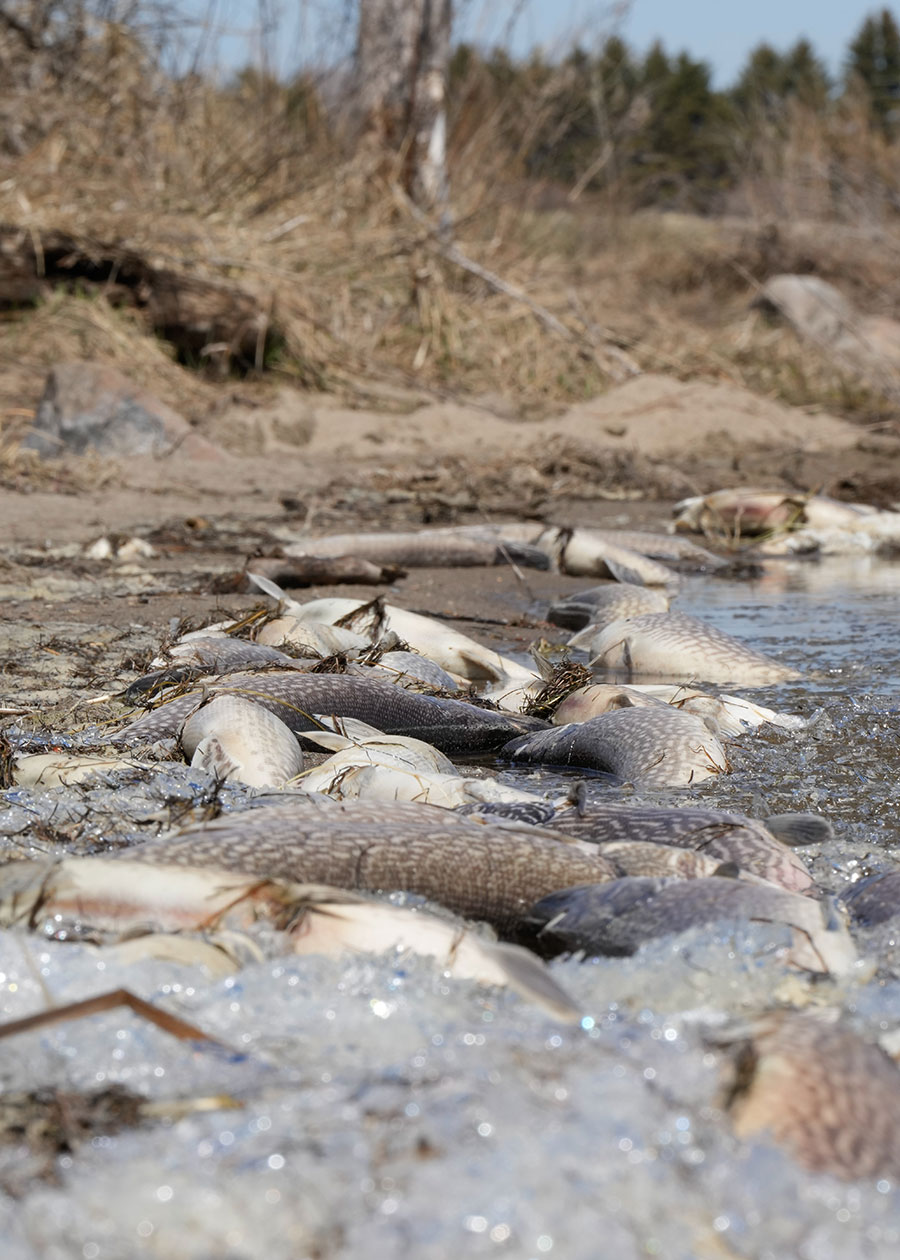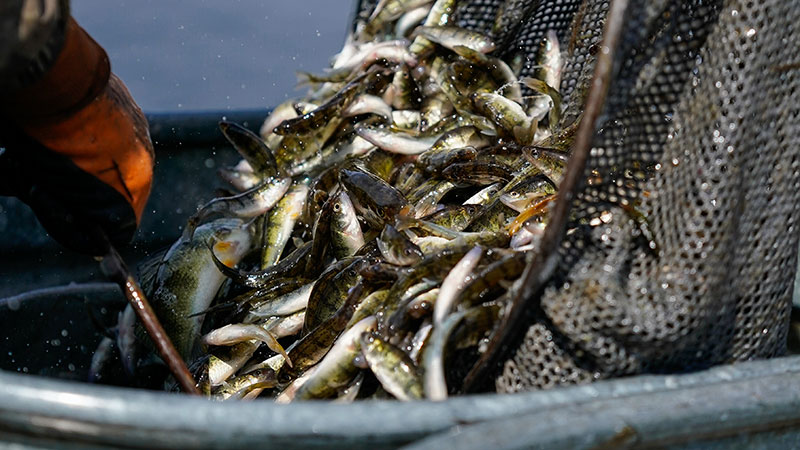Rebounding from Winter
Ron Wilson

Some fish die every winter.
It happens.
Even so, last winter was a different story. Snow came early and often and seemingly hung around forever, blocking sunlight from penetrating the ice and handcuffing underwater plants from producing oxygen fish need to survive.
The fallout, it is suspected, that more lakes than typical suffered winterkill.
A lot more.
North Dakota Game and Fish Department fisheries biologists took dissolved oxygen level readings on many lakes in the dead of winter and the findings were, not surprisingly, discouraging.
“I think our guys compiled a list that probably included 80 or 90 lakes that had concerning oxygen levels,” said Scott Gangl, Department fisheries management section leader, in early May when some lakes around the state were still iced over and had yet to reveal the outcome of the long winter. “And by concerning, it means it may not be 100% lethal, but with a lot of winter remaining, there was probably going to be a drop to lethal levels. Some of the lakes were already dead when they were tested in February.”
Yet, not all the lakes on the too-long list will likely suffer total winterkill. Some may suffer some mortality, but still pull through.
“Out of that list of lakes, I bet there’s maybe a half a dozen that were good quality lakes that don’t usually winterkill. Some of the others are marginal lakes that are kind of susceptible to winterkill from time to time anyway,” Gangl said.
“Some will winterkill every few years, some will winterkill occasionally. There really aren’t a lot of surprises on the list. It’s just that this winter triggered all of them to be low all at once because of the long-term snowpack and ice cover.”
While some of the lakes had low enough dissolved oxygen levels to kill fish, there’s a chance not everything in the lakes will die and what remains can pose management problems.

“What you end up with is some of the sensitive species, which tend to be game fish or desirable fish to anglers, are the ones that are going to be impacted. Often, the survivors are the tougher species, which tend to be the nongame fish like bullheads, carp and suckers,” Gangl said. “And so, you end up with a situation where they’re now allowed to thrive in this open environment, while we’re trying to establish game fish back into a lake. That’s why we do have some problems with bullheads and other rough fish in some of parts of the state.”
Gangl said that while it’s a setback to lose dozens of lakes to winterkill, but not surprising considering the magnitude of the winter, fisheries managers are prepared to deal with the aftermath.
“Again, the vast majority of the lakes that we’re monitoring have winterkilled in the past, and a lot of them are already on our stocking request because we stock them annually,” he said. “We’re going to lose some lakes, but if you can start over with a clean slate and get a complete kill on some of these places, we’re able to restock. We’ll get fish in there as soon as we can.”
Not all of the fish will come from the hatchery to reboot winterkill lakes. Gangl said Department fisheries personnel will trap adult fish in one lake and transport them to another.

